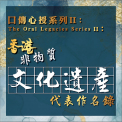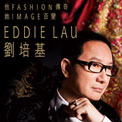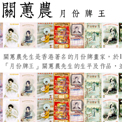-
History & Society
- Education in Pre-war Hong Kong
- History of Taikoo Sugar Refinery
- Hong Kong Products Exhibition
- Local Festivals Around the Year
- Post-war Industries
- Pre-war Industry
- The Hong Kong Jockey Club Archives
- Tin Hau Festival
- Memories We Share: Hong Kong in the 1960s and 1970s
- History in Miniature: The 150th Anniversary of Stamp Issuance in Hong Kong
- A Partnership with the People: KAAA and Post-war Agricultural Hong Kong
- The Oral Legacies (I) - Intangible Cultural Heritage of Hong Kong
- Hong Kong Currency
- Hong Kong, Benevolent City: Tung Wah and the Growth of Chinese Communities
- The Oral Legacies Series II: the Representative List of the Intangible Cultural Heritage of Hong Kong
- Braving the Storm: Hong Kong under Japanese Occupation
- A Century of Fashion: Hong Kong Cheongsam Story
Geography & EnvironmentArt & Culture- Calendar Posters of Kwan Wai-nung
- Festival of Hong Kong
- Ho Sau: Poetic Photography of Daily Life
- Hong Kong Cemetery
- Sketches by Kong Kai-ming
- The Culture of Bamboo Scaffolding
- The Legend of Silk and Wood: A Hong Kong Qin Story
- Journeys of Leung Ping Kwan
- From Soya Bean Milk To Pu'er Tea
- Applauding Hong Kong Pop Legend: Roman Tam
- 他 FASHION 傳奇 EDDIE LAU 她 IMAGE 百變 劉培基
- A Eulogy of Hong Kong Landscape in Painting: The Art of Huang Bore
- Imprint of the Heart: Artistic Journey of Huang Xinbo
- Porcelain and Painting
- A Voice for the Ages, a Master of his Art – A Tribute to Lam Kar Sing
- Memories of Renowned Lyricist: Richard Lam Chun Keung's Manuscripts
- Seal Carving in Lingnan
- Literary Giant - Jin Yong and Louis Cha
-
History & SocietyGeography & EnvironmentArt & Culture
-
View Oral History RecordsFeatured StoriesAbout Hong Kong Voices
-
Hong Kong MemoryA Century of Fashion: Hong Kong Cheongsam StoryRecently Visited
Steps (2)
After cutting out the parts for the cheongsam from the fabric, the tailor will perform the unique guibo operation, which involves manipulating the iron to ‘pull and push’ the parts into shape, straightening curved edges or curving straight edges to fit the contours of the body. Throughout the production process, the tailor will often have to apply glue, or rather a paste prepared from mixing flour with hot water and white alum, to stiffen the fabric and make it easier to cut, fix and sew.
Sewing is done by hand or machine. Cheongsams that boast traditional Shanghai craftsmanship still feature many hand-sewn details. The most desirable stitch density is eighteen stitches to one cun (just under 1.5 inches). Sewing needles come in different thicknesses and lengths to suit different needs. The sewing machine only became popular in Hong Kong in the 1950s. Today cheongsam tailors still use pedal sewing machines, which, despite being slower than electric ones, are easier to manage and control.
A fitting will be carried out at the stage when the dress is semi-finished and before adornments are added. Other accessories such as bindings, frog closures and ‘flower buttons’ also involve meticulous craftsmanship, and they again showcase the superb expertise of the cheongsam tailors acquired through long years of practice.
Photos
Copyright © 2012 Hong Kong Memory. All rights reserved.













